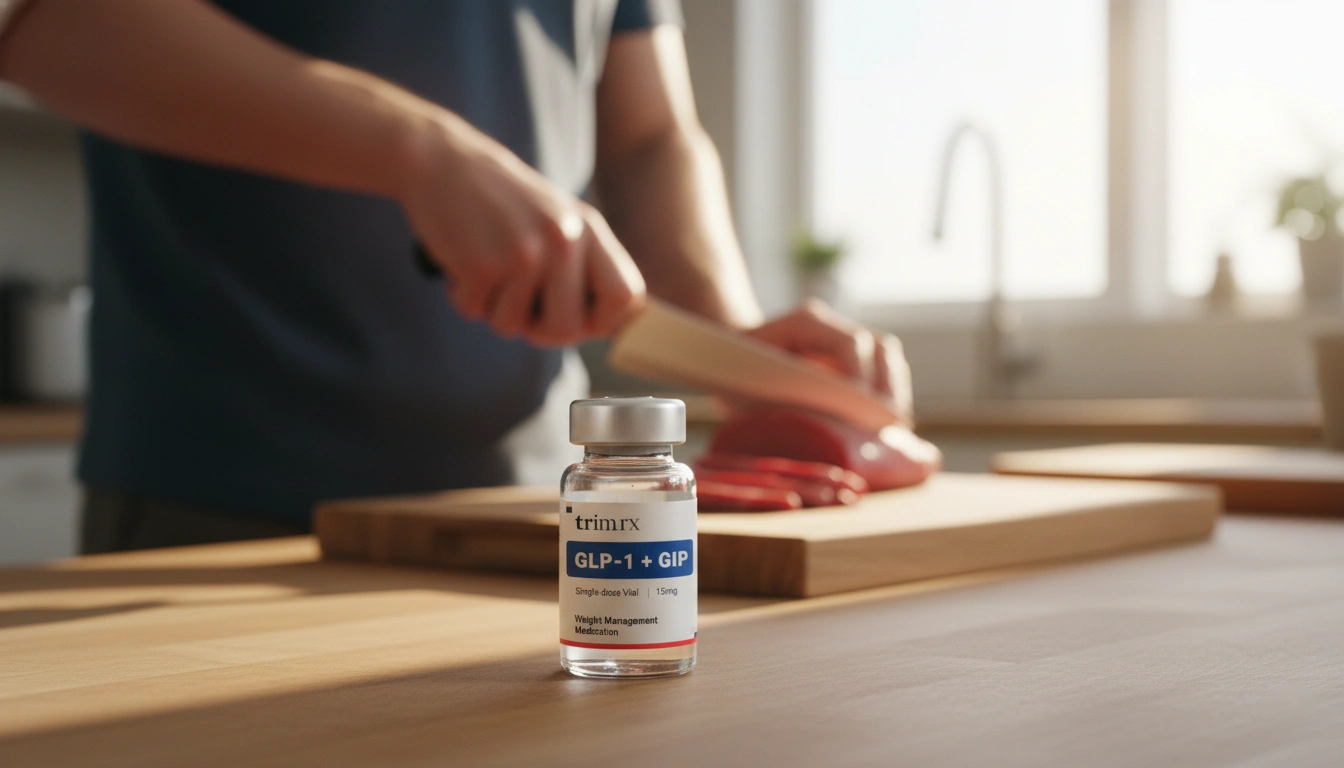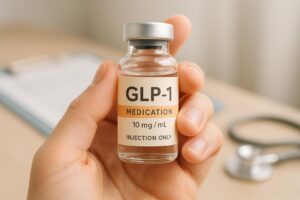Are GLP-1 Medications Safe Long Term? A Deep Dive into Their Efficacy and Safety

The rise of GLP-1 medications in recent years has been nothing short of remarkable. From their initial use in managing type 2 diabetes to their growing popularity as weight-loss solutions, these drugs have captured public attention and sparked significant debate. Have you ever wondered about the long-term safety of these medications? With increasing reports of their benefits, it’s crucial to examine the evidence surrounding their long-term effects thoroughly. In this blog post, we will navigate the complexities of GLP-1 medications, addressing their safety profile, potential side effects, and the implications for long-term users.
Our journey begins by exploring what GLP-1 medications are and how they function, followed by a detailed examination of their efficacy for weight loss and blood sugar control. We will then discuss the side effects associated with these medications, emphasizing the importance of understanding both the benefits and risks. Additionally, we will look at research findings on their long-term safety, addressing concerns that have emerged in clinical studies. Finally, we will conclude with recommendations for individuals considering GLP-1 medications as part of their weight management or diabetes treatment plans.
Introduction
Did you know that obesity and type 2 diabetes rates have reached epidemic proportions globally? According to the World Health Organization, obesity has nearly tripled since 1975, while the International Diabetes Federation estimates that 537 million adults are living with diabetes worldwide. In light of these alarming statistics, effective treatments are more critical than ever, and GLP-1 receptor agonists (GLP-1 RAs) have emerged as a groundbreaking option. Initially approved for diabetes management, these medications are now being used off-label for weight loss, leading to widespread curiosity and concern about their long-term safety.
At TrimRx, we believe in the power of personalized, medically supervised weight loss solutions that prioritize safety and effectiveness. As we delve into the intricacies of GLP-1 medications, we aim to provide clarity on their long-term safety profile and empower individuals to make informed decisions about their health.
By the end of this article, you will have a comprehensive understanding of GLP-1 medications, including their mechanisms of action, benefits, potential side effects, and emerging safety data. Through this exploration, we hope to encourage thoughtful engagement with these medications and promote a balanced view of their role in weight management and diabetes control.
Understanding GLP-1 Medications
GLP-1 medications, or glucagon-like peptide-1 receptor agonists, mimic a natural hormone in the body that plays a key role in regulating glucose metabolism and appetite control. They work by enhancing insulin secretion, suppressing glucagon release (a hormone that raises blood sugar levels), and slowing gastric emptying, which can lead to reduced appetite and increased feelings of fullness.
The FDA has approved several GLP-1 medications, including:
- Semaglutide (Ozempic®, Wegovy®)
- Liraglutide (Victoza, Saxenda)
- Dulaglutide (Trulicity)
- Tirzepatide (Mounjaro, Zepbound)
Each of these medications has specific dosing guidelines and indications, with some approved for type 2 diabetes and others for weight loss in individuals with obesity. Understanding the unique properties of each medication is essential before considering their long-term use.
Mechanism of Action
GLP-1 medications function through multiple mechanisms:
- Enhanced Insulin Secretion: They stimulate the pancreas to release insulin when blood sugar levels are elevated, helping to lower glucose levels post-meal.
- Glucagon Suppression: By inhibiting glucagon production, these medications prevent the liver from releasing too much glucose into the bloodstream, further aiding blood sugar control.
- Reduced Appetite: GLP-1 RAs signal the brain to promote satiety, leading to decreased food intake and potential weight loss.
These actions collectively contribute to improved glycemic control and weight management, making GLP-1 medications a valuable tool for individuals struggling with obesity and type 2 diabetes.
Efficacy of GLP-1 Medications for Weight Loss
Research has consistently demonstrated the efficacy of GLP-1 medications in facilitating weight loss. In clinical trials, participants using these medications have experienced significant reductions in body weight compared to those receiving placebo treatments. For instance, studies involving semaglutide have shown average weight loss of 15-20% of initial body weight, making it a powerful option for individuals seeking to achieve sustainable weight loss.
Clinical Evidence
A systematic review and network meta-analysis published in The BMJ highlighted the effectiveness of GLP-1 medications in controlling blood sugar, reducing weight, and improving lipid profiles in individuals with type 2 diabetes. The review analyzed data from multiple clinical trials and concluded that these medications are not only effective in managing diabetes but also offer substantial benefits for weight loss.
The results from the Nature Cardiovascular Research study further support the use of GLP-1 medications, indicating that they can significantly reduce the risk of major cardiovascular events among patients with moderate cardiovascular risk. These findings underscore the dual benefits of GLP-1 medications, making them appealing for both diabetes management and weight loss.
Potential Side Effects of GLP-1 Medications
While GLP-1 medications offer many benefits, they are not without side effects. Understanding these potential adverse effects is crucial for individuals considering long-term use. The most commonly reported side effects include:
- Gastrointestinal Symptoms: Nausea, vomiting, diarrhea, and constipation are among the most frequently experienced side effects, particularly during the initial weeks of treatment. These symptoms often diminish over time as the body adjusts to the medication.
- Injection Site Reactions: As these medications are administered via injection, some users may experience local reactions at the injection site, including redness, swelling, or pain.
- Pancreatitis: There have been reports of pancreatitis (inflammation of the pancreas) associated with GLP-1 medications. While the risk appears to be low, it’s essential for patients to be aware of the symptoms and seek medical attention if they experience severe abdominal pain.
- Thyroid Tumors: Animal studies have shown an increased risk of thyroid tumors, including medullary thyroid carcinoma, associated with GLP-1 medications. While this risk has not been definitively established in humans, the FDA has issued warnings regarding this potential concern.
It’s important to approach these medications under the guidance of a healthcare professional who can monitor for side effects and ensure that the benefits outweigh the risks.
Long-Term Safety Considerations
As the popularity of GLP-1 medications continues to grow, questions about their long-term safety have become increasingly pertinent. While short-term studies have shown favorable outcomes, the long-term effects remain less well-studied.
Emerging Research on Long-Term Use
Recent studies have begun to shed light on the long-term safety of GLP-1 medications. A large retrospective cohort study indicated that GLP-1 RAs may be associated with a significantly lower risk of all-cause mortality and cardiovascular complications in individuals with obesity and without type 2 diabetes. This suggests that, when used appropriately, GLP-1 medications may offer protective effects on overall health.
However, concerns about potential long-term side effects persist. Researchers have noted that while the short-term efficacy of GLP-1 medications is well-established, their prolonged use could lead to unforeseen complications. As with any medication, ongoing monitoring and evaluation are essential to ensure patient safety.
Recommendations for Long-Term Users
Individuals considering long-term use of GLP-1 medications should engage in thorough discussions with their healthcare providers. Here are some recommendations to consider:
- Regular Monitoring: Routine follow-ups with healthcare providers can help track progress, evaluate side effects, and make necessary dosage adjustments.
- Comprehensive Assessment: Before starting GLP-1 medications, patients should undergo a thorough assessment to determine their suitability for treatment, considering any pre-existing health conditions or risk factors.
- Lifestyle Modifications: GLP-1 medications are most effective when combined with lifestyle changes, such as a balanced diet and regular exercise. These modifications can enhance the effectiveness of the medication and promote long-term success.
- Stay Informed: As new research emerges, staying informed about the latest findings on GLP-1 medications can empower patients to make informed decisions about their treatment options.
Conclusion
The effectiveness of GLP-1 medications in managing weight and blood sugar levels is well-documented, offering hope for individuals struggling with obesity and type 2 diabetes. While the short-term benefits are clear, the long-term safety of these medications remains a nuanced topic requiring careful consideration.
As we navigate the complexities of GLP-1 medications, it’s essential to approach their use with informed caution. By understanding their mechanisms, efficacy, potential side effects, and emerging safety data, individuals can make empowered decisions about their health.
At TrimRx, our commitment to personalized, medically supervised weight loss solutions ensures that we prioritize your safety and well-being every step of the way. If you’re considering GLP-1 medications as part of your weight loss journey, we encourage you to take our free assessment quiz to see if you qualify for our personalized treatment plans.
FAQ
What are GLP-1 medications used for?
GLP-1 medications are primarily used to manage type 2 diabetes and promote weight loss in individuals with obesity.
How do GLP-1 medications work?
These medications enhance insulin secretion, suppress glucagon release, and reduce appetite, leading to improved blood sugar control and potential weight loss.
Are there any serious side effects associated with GLP-1 medications?
While most side effects are mild and gastrointestinal in nature, concerns about pancreatitis and thyroid tumors have emerged. It’s important to discuss these risks with your healthcare provider.
Is long-term use of GLP-1 medications safe?
Emerging research suggests that GLP-1 medications may have long-term benefits, but ongoing monitoring and assessment are crucial to ensure patient safety.
How can I determine if GLP-1 medications are right for me?
We recommend taking our free assessment quiz to see if you qualify for our personalized treatment plans and to engage in a discussion with your healthcare provider about your individual circumstances.
By maintaining an open dialogue with your healthcare team and staying informed about the latest research, you can navigate your weight loss journey confidently and safely. Together, we can explore the possibilities of a healthier future.

Transforming Lives, One Step at a Time
Keep reading
Tracking Progress With GLP-1: What To Measure
Learn which metrics to track on GLP‑1 therapy—weight, waist, blood sugar, lipids, side effects, and non‑scale wins—and how often to monitor them.
Fatigue Solutions for Ozempic and Wegovy Users
Hydration, protein-rich meals, light activity, and better sleep can reduce medication-related fatigue and help maintain energy during weight-loss treatment.
GLP-1 Medication Side Effect Checker
Worried about GLP-1 medication side effects? Use our free checker for Semaglutide, Liraglutide, and more to learn what to expect and stay informed!



